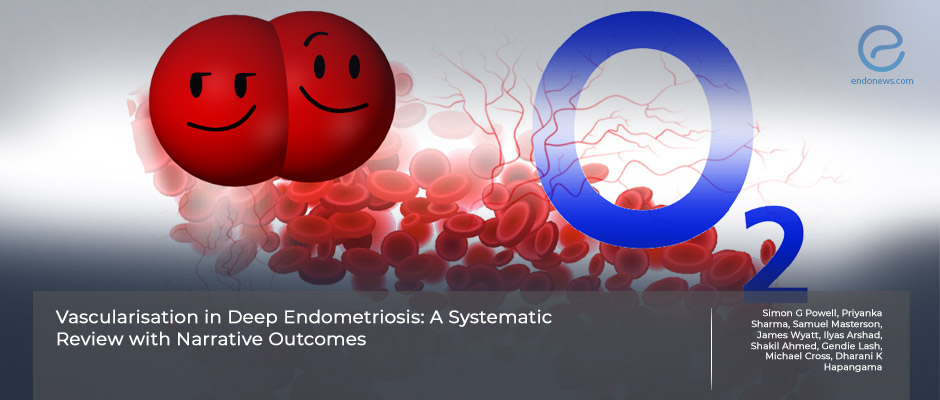Unraveling the Role of Vascularization in Deep Endometriosis
Jun 20, 2023
Targeting Angiogenesis in Deep Endometriosis
Key Points
Highlights:
- Vascularization is consistently associated with more severe forms of deep endometriosis and symptoms such as pain and infertility.
- Targeting angiogenesis, specifically through the inhibition of Vascular Endothelial Growth Factor (VEGF) and Hypoxia-induced Factor (HIF), may offer new therapeutic options for patients with deep endometriosis.
Importance:
- Understanding the relationship between vascularization and the severity of the condition can aid in accurate diagnosis and treatment planning.
What's done here:
- A systematic review of 15 studies published up to March 2023 was conducted to analyze the role of angiogenesis in the development and progression of deep endometriosis.
- The studies included a total of 1125 patients with deep endometriosis.
- The review focused on the relationship between vascularization and various clinical and histological characteristics of the condition.
Key Results:
- Increased vascularization was consistently associated with more severe forms of deep endometriosis and symptoms such as pain and infertility.
- VEGF and HIF are key regulators of angiogenesis and have been implicated in the development of deep endometriosis.
- MVD, a measure of microvessel density, was consistently higher in the endometrial tissue of women with deep endometriosis compared to those without the condition.
Limitations:
- The studies included in the review were mostly observational and cross-sectional, which limits the ability to establish causality.
- The sample sizes of some of the studies were relatively small.
- Differences in study design and patient populations may have contributed to heterogeneity across the studies.
Lay Summary
The systematic review by Simon G. Powell published in the journal Cells, analyzed 15 studies including 1125 women with deep infiltrative endometriosis up to March 2023 in several databases and found that angiogenesis plays a crucial role in the growth and spread of endometrial tissue outside of the uterus.
VEGF, namely Vascular Endothelial Growth Factor, is a key regulator of angiogenesis and has been implicated in the development of deep endometriosis. VEGF expression has been shown to be upregulated in the endometrial tissue of women with deep endometriosis compared to those without the condition. In addition, VEGF levels were found to be positively correlated with the severity of deep endometriosis.
Hypoxia-induced Factor (HIF) is another important regulator of angiogenesis that has been implicated in the development of deep endometriosis. It is a transcription factor activated in response to low oxygen levels, or hypoxia, which can occur in tissues with inadequate blood supply. HIF regulates the expression of genes involved in angiogenesis, including VEGF.
Studies have shown that HIF is upregulated in the endometrial tissue of women with deep endometriosis compared to those without the condition. This suggests that hypoxia may play a role in the development of deep endometriosis by promoting angiogenesis through the upregulation of HIF and VEGF.
MVD, or Microvessel Density, is a measure of the number of small blood vessels present in a tissue sample. MVD has been used as an indicator of angiogenesis in deep endometriosis. The review found that MVD was consistently higher in the endometrial tissue of women with deep endometriosis compared to those without the condition. This suggests that increased vascularization, as measured by MVD, is associated with the development and progression of deep endometriosis.
Overall, the findings of the systematic review suggest that targeting angiogenesis, specifically through the inhibition of VEGF and HIF, may offer new therapeutic options for patients with deep endometriosis. However, further research is needed to fully understand the mechanisms underlying the role of VEGF, HIF, and MVD in the development of vascularization in deep endometriosis and to identify effective therapeutic strategies that target these pathways.
Research Source: https://pubmed.ncbi.nlm.nih.gov/37174718/
VEGF HIF-1 microvessel density endometriosis

